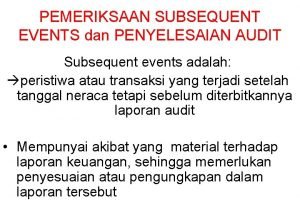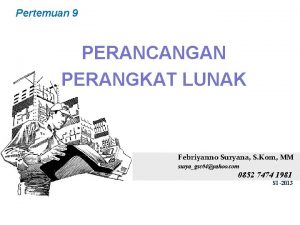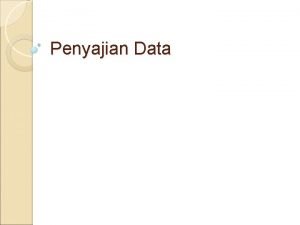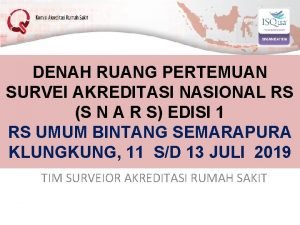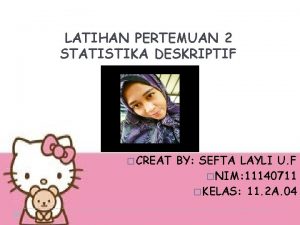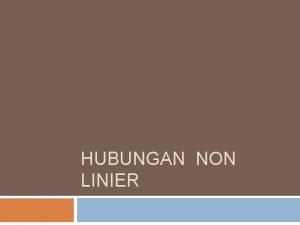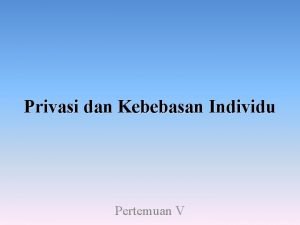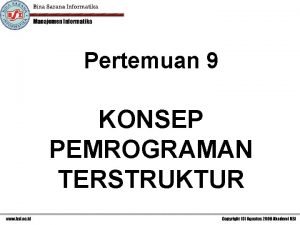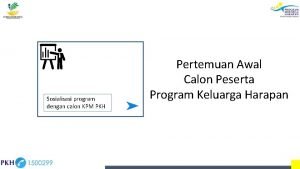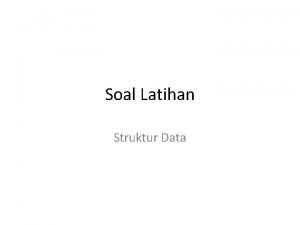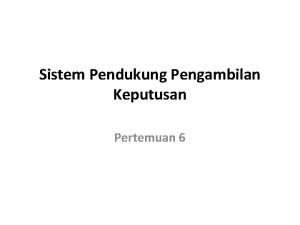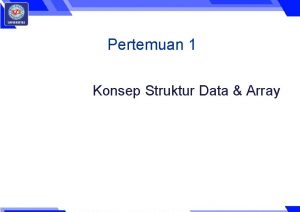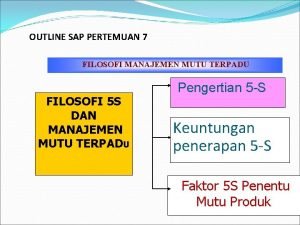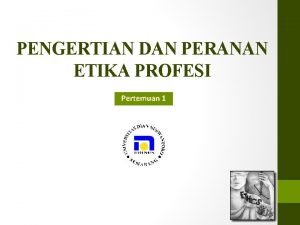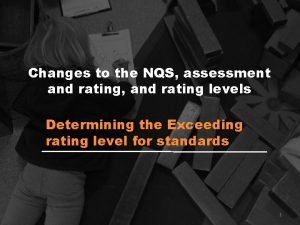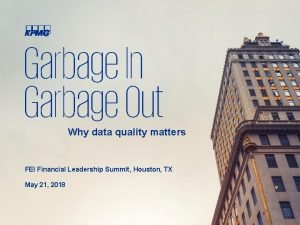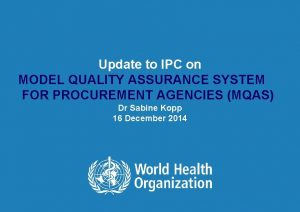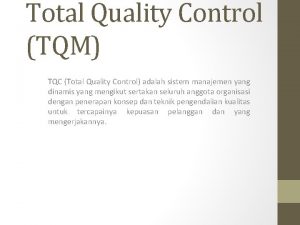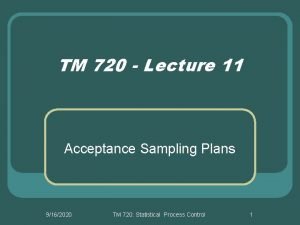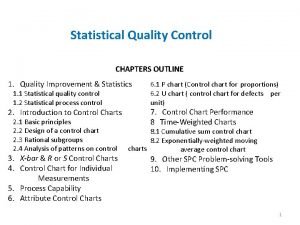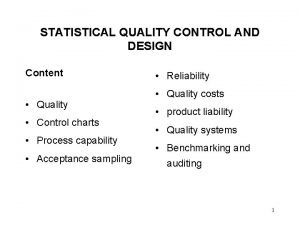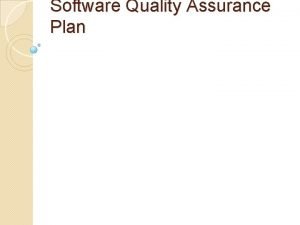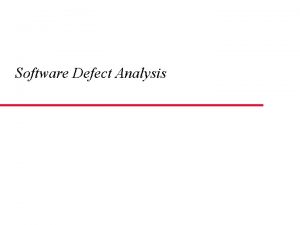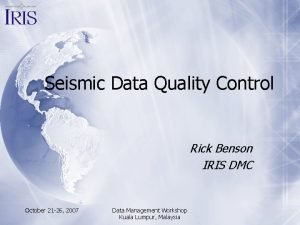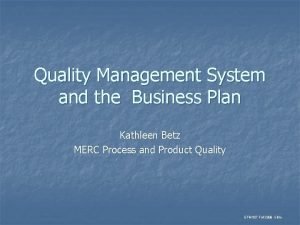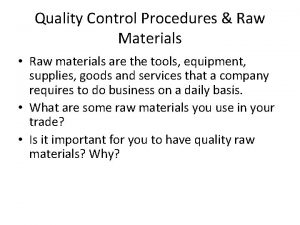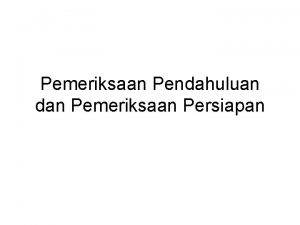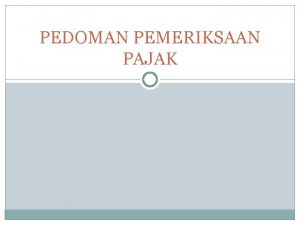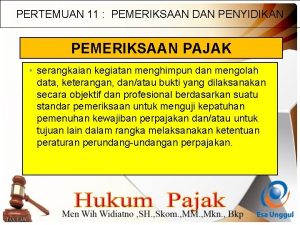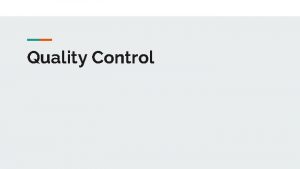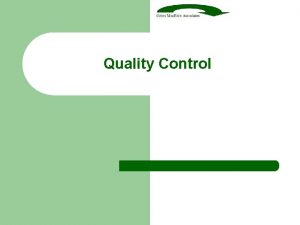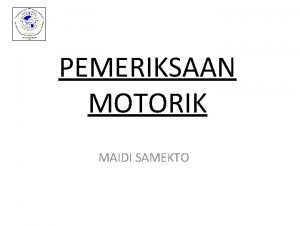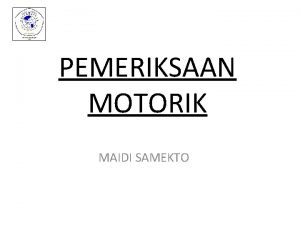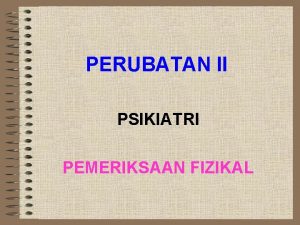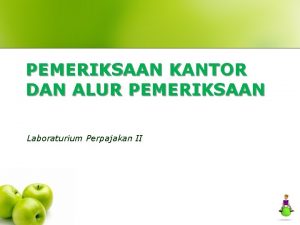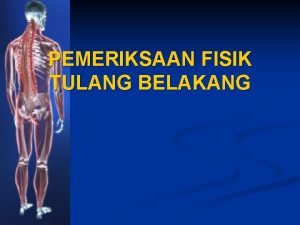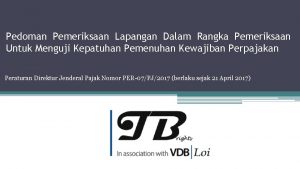Standard Pemeriksaan Quality Control PERTEMUAN III Dr Rilla




















































- Slides: 52

Standard Pemeriksaan & Quality Control PERTEMUAN III Dr Rilla Gantino, SE. , AK. , MM MM-FEB

KEMAMPUAN AKHIR YANG DIHARAPKAN Mahasiswa mampu meguraikan definisi & tujuan penerapan standard pemeriksaan dan Quallity Control

Ethical Principles 1. Responsibilities: Professionals should exercise sensitive and moral judgments in all their activities. 2. The public interest: Members should accept the obligation to act in a way that will serve and honor the public. 3. Integrity: Members should perform all responsibilities with integrity to maintain public confidence.

4. Objectivity and independence: Members should be objective, independent, and free of conflicts of interest. 5. Due care: Members should observe the profession’s standards and strive to improve competence. 6. Scope and nature of services: A member in public practice should observe the Code of Professional Conduct.

Independence In fact : when the auditor is actually able to maintain an unbiased attitude throughout the audit. In appearance: the result of other’s interpretations of this independence.

Sarbanes-Oxley Act and SEC Provisions Addressing Auditor Independence Prohibited services : 1. Bookkeeping and other accounting services 2. Financial information systems design and implementation 3. Appraisal or valuation services 4. Actuarial services 5. Internal audit outsourcing 6. Management of human resource functions 7. Broker, dealer, or investment adviser or investment banker services 8. Legal and expert services unrelated to the audit 9. Any other service that the PCAOB determines by regulation is impermissible

Audit Committees An audit committee is a selected number of members of a company’s board of directors whose responsibilities include helping auditors remain independent of management. Most audit committees are made up of three to five or sometimes as many as seven directors who are not a part of company management.

The Sarbanes-Oxley Act requires that all members of the audit committee be independent. Companies must disclose whether or not the audit committee includes at least one financial expert. Must preapprove all audit and non-audit services Responsible for oversight of the work of the auditor. Resolving disagreements involving financial reporting between management and the auditor.

Conflicts Arising from Employment Relationships The SEC has added a one year “cooling off ” period before a member of the audit engagement team can work for the client in certain key management positions.

Partner Rotation The Sarbanes-Oxley Act requires that the lead and concurring audit partner rotate off the audit engagement after a period of five years.

Ownership Interests SEC rules prohibit ownership in audit clients by those persons who can influence the audit. 1. Members of the audit engagement team. 2. Those in a position to influence the audit engagement in the firm chain of command. 3. Partners and auditors who provide more that 10 hours of nonaudit services to the client. 4. Partners in the office of the primarily responsible for the audit engagement.

Other Issues Shopping for accounting principles. Engagement and payment of audit fees by management?

AICPA Code rules and interpretations on independence and explain their importance Rule 101 -Independence. A member in public practice shall be independent in the performance of professional services as required by standards promulgated by bodies designated by Council.

Independence is required for attestation services. Like: Audit of historical financial statements/reviews. But is not required for other services : like tax returns and management services without being independent.

Interpretations for independence. Financial interests. Related financial interest issues. Litigation between CPA firm and client. Bookkeeping and other services. Unpaid fees.

Interpretations of Rule 101 prohibit covered members from owning any direct investments in audit clients. Because it is potentially damaging to (independence in fact), and is likely to affect users perceptions of the auditors independence ( independence in appearance). Indirect investment is also prohibited BUT only if the amount is material to the auditor. EX : ownership of stock in client’s company by an auditor’s grandparent.

Who are the covered members ? 1. Individuals on the attest engagement team. 2. An individual in a position to influence the attest engagement. 3. A partner or manager who provides nonattest services to the client. 4. A partner in the office of the partner responsible for the attest engagement. 5. The firm and its employee benefit plans. 6. An entity that can be controlled by any of the covered members listed above. The rules also apply to the covered members immediate family.

Direct versus Indirect Financial interests Direct Financial interests : The ownership of stock or other equity by members or their immediate family. Indirect financial interests : exists when there is close, but not a direct ownership relationship between the auditor and the client. Ex: covered member’s ownership of a mutual fund that has an investment in a client.

Material or Immaterial Materiality must be considered in relation to the member person’s wealth and income.

Related financial interest issues Former practitioners : former partners who left the firm due to such things as retirement or the sale of their ownership interests can have relationships with clients.

Normal Lending Procedures Loans between a CPA firm or covered members and an audit client are prohibited. Because it’s a financial relationship.

Financial interests and employment of immediate and close family members Are treated as is the were the financial interests of the covered member. EX: spouse of a professional on the audit team owns any stock in the client. Immediate family member holds a key position with the client. EX: CEO or CFO. Ownership of close family members (parent, sibling) if the ownership interest is material.

Joint investor or investee relationship with client Client investor 1: CPA Client (material or immaterial) (material) nonclient

Client investor 2: Client (immaterial) CPA (material) nonclient

Client investee Nonclient CPA Direct or material indirect client material

Director, officer, management, or employee of a company Interpretations prohibited covered members , partners, and professional staff in the office of the partner responsible for the attest engagement from being a director or officer of an audit client company.

Litigation Between CPA Firm and Client A lawsuit or intent to start a lawsuit between a CPA firm and its client, the ability of the CPA firm and client to remain objective is questionable. The interpretations regard such litigation as a violation of Rule 101

Bookkeeping and Other Services The AICPA Code permits a CPA firm to do both bookkeeping and auditing for a private company audit client. The SEC and AICPA rules do not allow audit firms to provide bookkeeping services to public company audit clients.

1. Client must accept full responsibility for the financial statements. 2. The CPA must not assume the role of employee or of management. 3. The audit must conform to GASS.

Consulting and other nonaudit services Allowed as long as the member does not perform management functions or make management decisions.

Unpaid fees Independence is considered impaired if billed or unbilled fees remain unpaid for services provided more than 1 year before the date of the report.

Rule 102: Integrity and Objectivity In the performance of any professional service, a member shall maintain objectivity and integrity, shall be free of conflicts of interest, and shall not knowingly misrepresent facts or subordinate his or her judgment to others.

201 – General standards A member shall comply wit the following standards : A. Professional competence. B. Due professional care. C. Planning and supervision. D. Sufficient relevant data.

202 – Compliance with standards A member who performs auditing, reviews, compilation, management counseling, tax, or other professional services shall comply with standards promulgated by bodies designated by council.

203 – Accounting principles A member shall follow the professional audit reporting standards in issuing reports about entities compliance with generally accepted accounting principles.

301 – Confidential client information A member in public practice shall not disclose any confidential client information without the consent of the client except for the following situations: 1. Obligation related to technical standards. 2. Subpoena or summons and compliance with laws and regulations. ( information obtained by a CPA from client is not privileged). 3. Peer review. 4. Responses to ethics divisions.

302 – Contingent fees A member in public practice shall not perform for a contingent fee any professional service if the member also performs for the client an audit, review.

501 – Acts discreditable A member shall not commit an act discreditable to the profession. EX : discrimination/ negligence.

502 – Advertising and other forms of solicitation A member in public practice shall not seek to obtain clients by advertising or other forms of solicitation in a manner that is false, misleading, or deceptive.

503 – Commissions and referral fees A member in public practice shall not receive or pay a commission or a referral fee for any client if the member also performs for the client an audit, review.

I. Pre-Engagement Arrangements A. Client selection and retention B. Communication between predecessor and successor auditors C. Engagement letters D. Staff assignment E. Time budget Mc. Graw-Hill/Irwin © 2007 by the Mc. Graw-Hill Companies, Inc. All rights reserved.

A. Client Selection and Retention Professional service firms are not obligated to accept undesirable clients, nor are they obligated to continue to serve clients when relationships deteriorate or when management comes under a cloud of suspicion. (See Auditing Insight on p. 101 of text. ) Mc. Graw-Hill/Irwin © 2007 by the Mc. Graw-Hill Companies, Inc. All rights reserved.

B. Communication between Predecessor and Successor Auditors (SAS 84) • Attempt to communicate required • If client permits, issues to discuss – Disagreements about accounting principles or audit procedures. – Communications the predecessor gave the former client about fraud, illegal acts, and internal control recommendations. – The predecessor’s understanding about the reasons for the change of auditors (particularly about the predecessor’s termination). Mc. Graw-Hill/Irwin © 2007 by the Mc. Graw-Hill Companies, Inc. All rights reserved.

C. Engagement Letters Recommended procedure to establish understanding with client regarding: v Engagement objectives v Management responsibilities v Auditor responsibilties v Engagement limitations Mc. Graw-Hill/Irwin © 2007 by the Mc. Graw-Hill Companies, Inc. All rights reserved.

D. Staff Assignment v Typical team includes: Ø Engagement partner with final responsibility Ø Audit manager Ø Industry specialist Ø Senior auditors Ø Computer specialists Ø Tax partner Ø Concurring partner v Concurring partner required for SEC audits. v Engagement partner must rotate off every 5 years. v New or complex clients are assigned more experienced staff. Mc. Graw-Hill/Irwin © 2007 by the Mc. Graw-Hill Companies, Inc. All rights reserved.

E. Time Budget v Number of hours for each audit segment is set out in a time budget. v Interim audit work is done several weeks or months before the balance sheet date. v Year-end work is done shortly before or after the balance sheet date. v Staff are to maintain time records of their work to allow for future planning and determining audit efficiency. Mc. Graw-Hill/Irwin © 2007 by the Mc. Graw-Hill Companies, Inc. All rights reserved.

II. Understanding the Client’s Business A. Enterprise Risk Management (ERM) B. Risk-Based Auditing (RBA) C. Minutes of Board of Directors D. Related Parties E. Tolerable Misstatement F. Specialists G. Analytical Procedures H. Planning Memorandum Mc. Graw-Hill/Irwin © 2007 by the Mc. Graw-Hill Companies, Inc. All rights reserved.

A. Enterprise Risk Management Framework (See discussion on pp. 107 -108 of text) Monitoring Internal Environment Objective Setting Event Identification Risk Assessment Information and Communication Risk Response Control Procedures Mc. Graw-Hill/Irwin © 2007 by the Mc. Graw-Hill Companies, Inc. All rights reserved.

The Public Company Accounting Oversight Board is a nonprofit corporation established by Congress to protect investors and the public interest by promoting informative, accurate, and independent audit reports and to oversee the audits of public companies and broker-dealers. Mc. Graw-Hill/Irwin © 2007 by the Mc. Graw-Hill Companies, Inc. All rights reserved.

Relationship of Auditing Standards to Quality Control Standards. 01 The independent auditor is responsible for compliance with the standards of the PCAOB in an audit engagement. . Mc. Graw-Hill/Irwin © 2007 by the Mc. Graw-Hill Companies, Inc. All rights reserved.

. 02 A firm of independent auditors has a responsibility to adopt a system of quality control in conducting an audit practice. 2 Thus, a firm should establish quality control policies and procedures to provide it with reasonable assurance that its personnel comply with the standards of the PCAOB in its audit engagements. The nature and extent of a firm's quality control policies and procedures depend on factors such as its size, the degree of operating autonomy allowed its personnel and its practice offices, the nature of its practice, its organization, and appropriate cost-benefit considerations. Mc. Graw-Hill/Irwin © 2007 by the Mc. Graw-Hill Companies, Inc. All rights reserved.

. 03 Auditing standards relate to the conduct of individual audit engagements; quality control standards relate to the conduct of a firm's audit practice as a whole. Thus, auditing standards and quality control standards are related, and the quality control policies and procedures that a firm adopts may affect both the conduct of individual audit engagements and the conduct of a firm's audit practice as a whole. However, deficiencies in or instances of noncompliance with a firm's quality control policies and procedures do not, in and of themselves, indicate that a particular audit engagement was not performed in accordance with the auditing standards. Mc. Graw-Hill/Irwin © 2007 by the Mc. Graw-Hill Companies, Inc. All rights reserved.
 Pemeriksaan subsequent event dan penyelesaian pemeriksaan
Pemeriksaan subsequent event dan penyelesaian pemeriksaan Rilla gantino
Rilla gantino Retail marketing decisions
Retail marketing decisions Rilla gantino
Rilla gantino Quality control and quality assurance
Quality control and quality assurance Pmp quality management
Pmp quality management Pmp gold plating
Pmp gold plating Basic concepts of quality
Basic concepts of quality Hamlet act iii scene ii
Hamlet act iii scene ii Tugas pertemuan 9 metode perancangan program
Tugas pertemuan 9 metode perancangan program Apakah pengertian diagram batang
Apakah pengertian diagram batang Pendekatan aditif adalah
Pendekatan aditif adalah Pertemuan multikultural
Pertemuan multikultural Denah ruang pertemuan
Denah ruang pertemuan Majas hiperbola
Majas hiperbola Creat by
Creat by Pada pertemuan kali ini kita
Pada pertemuan kali ini kita Tester
Tester Pertemuan 9
Pertemuan 9 Pertemuan awal pkh adalah
Pertemuan awal pkh adalah Diketahui sebuah graph tak terarah memiliki 4 vertex
Diketahui sebuah graph tak terarah memiliki 4 vertex Spk latihan pertemuan 6
Spk latihan pertemuan 6 Sel adalah pertemuan antara titik-titik dan titik-titik
Sel adalah pertemuan antara titik-titik dan titik-titik Deklarasi array x adalah double a 2 4 5
Deklarasi array x adalah double a 2 4 5 Tipe data array
Tipe data array Sell adalah pertemuan antara
Sell adalah pertemuan antara Sukrosa
Sukrosa Logo pertemuan
Logo pertemuan Pertemuan permintaan barang dan jasa
Pertemuan permintaan barang dan jasa Peranan atau fungsi etika
Peranan atau fungsi etika Quality improvement vs quality assurance
Quality improvement vs quality assurance Quality improvement vs quality assurance
Quality improvement vs quality assurance Which one is jurans three role model
Which one is jurans three role model Crosby's fourteen steps to quality improvement
Crosby's fourteen steps to quality improvement What is tqm
What is tqm National quality standard assessment and rating instrument
National quality standard assessment and rating instrument Waste container lid
Waste container lid Standard error
Standard error Power dynamics of standard language vs home language
Power dynamics of standard language vs home language Standard cost accounting
Standard cost accounting Peruntukan masa kssm 2021
Peruntukan masa kssm 2021 Ipc quality control
Ipc quality control Total quality control tqc
Total quality control tqc Producer's risk
Producer's risk Average run length in quality control
Average run length in quality control Define statistical quality control
Define statistical quality control Quality assurance plan in software engineering
Quality assurance plan in software engineering Quality control log examples
Quality control log examples Subway quality control
Subway quality control Seismic quality control
Seismic quality control Quality control system in business plan example
Quality control system in business plan example Control determination
Control determination Receiving raw material
Receiving raw material
